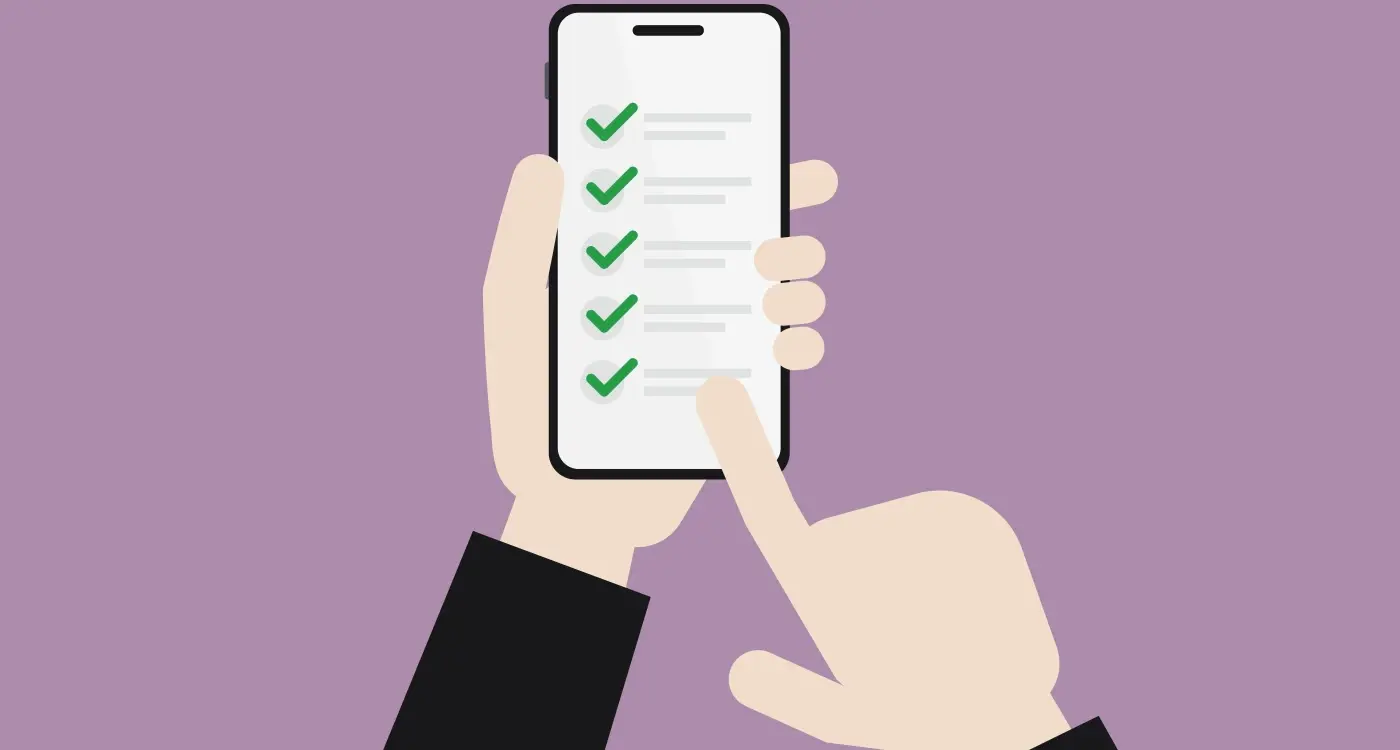How Do I Prevent Bugs From Happening In The First Place?
Every mobile app developer has faced that sinking feeling when a critical bug appears in production—the one that somehow slipped through all the testing and quality assurance checks. Studies show that fixing bugs after release costs up to 100 times more than catching them during development. That's not just a number; it's a reality that can make or break your app's success and your budget.
The truth is, preventing bugs isn't about having perfect code or flawless developers. It's about building systems and processes that catch problems before they reach your users. After working on countless mobile app projects, I've learned that the best developers aren't those who never make mistakes—they're the ones who've created workflows that spot issues early.
The best bug is the one that never makes it to production
This guide will walk you through practical development best practices that prevent bugs from happening in the first place. We'll cover everything from planning your development process to implementing proper quality assurance measures. You'll discover how clean code, thorough testing, and smart team collaboration can transform your mobile app development from a bug-hunting nightmare into a smooth, predictable process. Let's build apps that work reliably from day one.
Planning Your App Development Process
I've watched countless projects go sideways because teams rushed straight into coding without proper planning—and trust me, it's painful to watch. The bugs that emerge from poor planning aren't just annoying; they're expensive and time-consuming to fix later.
Before writing a single line of code, you need to map out your app's features and user flows. This means creating wireframes, defining user stories, and understanding exactly what your app should do. When you skip this step, developers end up making assumptions that don't match what users actually need.
Breaking Down Your Development Phases
Smart planning means dividing your project into manageable chunks. Each phase should have clear goals and deliverables:
- Discovery and research phase
- Design and prototyping phase
- Development sprints
- Testing and quality assurance
- Launch preparation
Setting Up Your Tech Stack Early
Choose your development tools, frameworks, and platforms before you start building. This prevents compatibility issues and ensures everyone on your team is working with the same foundation. Document these decisions—future you will thank present you when onboarding new team members.
The time you spend planning upfront saves weeks of debugging later. It's not glamorous work, but it's the difference between a smooth development process and a chaotic scramble to fix preventable problems. If you're just starting out, learn more about turning your app idea into reality with proper planning foundations.
Writing Clean and Maintainable Code
After years of building mobile apps for all kinds of clients, I can tell you that clean code isn't just about making things look pretty—it's about preventing bugs before they even have a chance to appear. When your code is well-structured and easy to understand, you're setting yourself up for success from day one.
The foundation of bug prevention starts with how you write your code. Clear variable names, consistent formatting, and logical structure make it much easier to spot problems early. When I review code that's been rushed or poorly organised, I can almost guarantee we'll find bugs hiding in the mess.
Key Principles for Clean Mobile App Code
- Use descriptive names for variables and functions
- Keep functions small and focused on one task
- Remove unused code and comments regularly
- Follow consistent naming conventions throughout your project
- Structure your files and folders logically
Write code as if the person maintaining it is a violent psychopath who knows where you live. This old programming joke holds true—clear, self-documenting code saves everyone time and prevents countless headaches.
Maintainable code becomes even more important when you're working on mobile app development because updates and new features are constant. Quality assurance becomes much easier when your development best practices include writing code that's built to last.
Testing Throughout Development
I'll be honest with you—testing isn't the most exciting part of app development, but it's absolutely one of the most important. Over the years, I've seen countless projects where developers thought they could leave testing until the end, only to discover a mountain of bugs that could have been caught much earlier. The reality is that testing should happen at every stage of development, not just at the finish line.
Start Testing Early and Often
The best approach is to write tests as you write your code. This might seem like it slows you down at first, but trust me—it saves time in the long run. Unit tests check individual pieces of code work correctly; integration tests make sure different parts of your app talk to each other properly. When you catch bugs early, they're much easier and cheaper to fix than when they're buried deep in a complex system.
Automated Testing Is Your Friend
Setting up automated tests means your app gets checked every time you make changes. This catches problems before they reach your users, which is exactly what we want. Manual testing is still important—especially for user experience—but automated tests handle the repetitive stuff so you can focus on the bigger picture. For comprehensive testing strategies, check out our guide on how to test an app before launching it to the public.
Code Review and Team Collaboration
After years of building mobile apps for teams of all sizes, I've seen how code reviews can make or break a development project. When done right, they catch bugs before they reach your users—when done wrong, they slow everything down and create tension between team members.
The key is making code reviews feel like a team sport rather than a grading exercise. Every developer should review code, not just the senior ones. Fresh eyes spot different problems, and junior developers often ask questions that reveal unclear code that needs fixing.
Setting Up Your Review Process
Start with small, focused reviews. Nobody wants to review 500 lines of code changes—break them into smaller chunks that are easier to digest. Set clear guidelines about what reviewers should look for: bugs, security issues, performance problems, and code that doesn't follow your team's style.
The best code reviews I've seen focus on teaching and learning, not just finding mistakes
Making Reviews Work for Your Team
Use tools that make reviewing easier—GitHub, GitLab, or Bitbucket all have built-in review features that let you comment on specific lines of code. Create checklists for common mobile app issues like memory leaks, API error handling, and user interface problems. Most importantly, be kind in your feedback; remember there's a real person behind that code who's trying their best to build a great mobile app. Learn from what developers can learn from the top app development companies about creating effective review processes.
Managing Dependencies and Third-Party Libraries
After years of building mobile apps, I've learnt that third-party libraries are both a blessing and a curse. They can speed up development massively—why reinvent the wheel when someone's already built a perfectly good one? But they can also introduce bugs you never saw coming, especially when they update without warning.
The trick is being selective about what you bring into your project. I always ask myself: does this library solve a real problem, or am I just being lazy? If it's a simple function I could write myself in an hour, I'll usually skip the dependency. But for complex things like payment processing or image manipulation, libraries are absolute lifesavers.
Smart Dependency Management
Here's what I do to keep dependencies under control:
- Lock versions in your package files—don't let libraries auto-update
- Read the changelog before updating anything
- Test updates in a separate branch first
- Keep a list of what each library does and why you need it
- Remove unused dependencies regularly
Staying Safe
Security matters more than convenience. I always check how actively maintained a library is before adding it; if the last update was two years ago, that's a red flag. Also, smaller libraries from unknown developers need extra scrutiny—you're essentially trusting them with your app's stability. Following app development best practices can help you make smarter decisions about which tools to integrate.
Monitoring and Error Tracking
Right, let's talk about something that can save your bacon when things go wrong—and they will go wrong, trust me on this one. After years of building mobile apps, I've learnt that catching problems early is worth its weight in gold. That's where monitoring and error tracking come in, acting like your app's personal health check system.
Think of error tracking as your app's way of telling you when something isn't working properly. When a user taps a button and nothing happens, or when the app crashes unexpectedly, these tools capture what went wrong and send you a detailed report. Without this setup, you're flying blind—users might be having problems but you won't know until they leave angry reviews.
Set up crash reporting tools like Crashlytics or Bugsnag from day one of development. Don't wait until after launch—you'll miss valuable data from your testing phase.
Key Monitoring Tools for Mobile Apps
- Crash reporting services (Crashlytics, Bugsnag)
- Performance monitoring tools (Firebase Performance, New Relic)
- User analytics platforms (Google Analytics, Mixpanel)
- Real-time error tracking (Sentry, Rollbar)
- Device and OS compatibility checkers
The brilliant thing about modern error tracking is that it tells you exactly which device, operating system, and app version caused the problem. This makes fixing bugs much faster than the old days when you had to guess what went wrong. Smart monitoring can catch issues before they affect too many users, keeping your app's reputation intact. For more insights on gathering feedback, see our guide on how to get users to leave feedback about your app.
Documentation and Knowledge Sharing
Documentation isn't just about writing things down—it's about creating a safety net for your entire development team. I've worked on projects where the original developer left and took all the knowledge with them, leaving the rest of us scrambling to figure out why certain code decisions were made. Trust me, you don't want to be in that position when a critical bug surfaces and nobody knows how the authentication system actually works!
Good documentation serves multiple purposes: it helps new team members get up to speed quickly, it provides context for future code changes, and it acts as a reference when debugging issues. But here's the thing—documentation doesn't have to be perfect or comprehensive from day one. Start with the basics and build it up over time.
What Should You Document?
Focus on documenting the parts of your app that aren't immediately obvious from reading the code. API endpoints, database schemas, deployment processes, and any unusual business logic decisions should all be recorded. Comments in your code are great, but sometimes you need something more substantial.
- API documentation with request/response examples
- Database schema and relationship explanations
- Deployment and environment setup instructions
- Known issues and their workarounds
- Architecture decisions and the reasoning behind them
Making Knowledge Sharing Natural
The best documentation systems are the ones that get used regularly. Whether that's a shared wiki, README files in your code repository, or even just well-organised Slack channels where discussions are easily searchable. The key is making it easy for team members to both contribute and find information when they need it. Understanding what separates good apps from great ones often comes down to these foundational practices that support long-term success.
Conclusion
After eight years of building mobile apps for clients across every industry you can think of, I've learned that preventing bugs isn't about having a perfect process—it's about having a consistent one. The development teams that succeed are the ones who make quality assurance part of their daily routine, not something they bolt on at the end.
Look, bugs will still happen. That's just the reality of software development. But when you plan properly, write clean code, test throughout development, and keep your team talking to each other, you catch most problems before they become real headaches. The techniques we've covered aren't revolutionary; they're just good habits that compound over time.
What matters most is picking the practices that work for your team and sticking with them. Maybe you start with better code reviews, or perhaps you focus on setting up automated testing first. The key is to start somewhere and build momentum. Your mobile app users will thank you for it, and honestly, so will your future self when you're not firefighting bugs at 2am on a Sunday.
Quality isn't a destination—it's a journey that starts with your very first line of code.
Share this
Subscribe To Our Learning Centre
You May Also Like
These Related Guides

What's the Difference Between Manual and Automated App Testing?

How Do I Manage Different Versions of My App for Testing?



